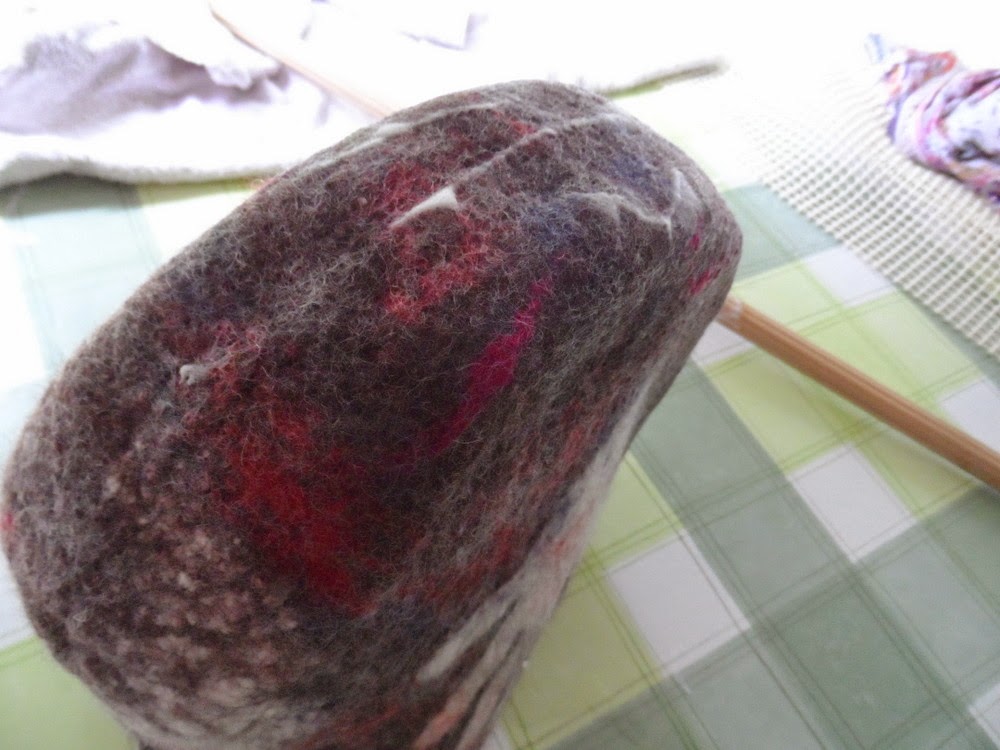Although I have lots of batts left.. I also came back from the Lizard workshop with a fair sized bag of wet bits.. pieces that I had pulled off from areas that had too much fibre (from fluffy roots being too long or in places where folding over rays would of overlapped and needed thinning). All the colours were in together in a soggy, soapy mass.. so I rinsed them and dried them and put them aside for later use.
I decided to use them for this project.. a wallet style purse for me. First step was to card the fibre into a variegated batt.
 |
| All my lizard colours mixed up together.. a purple base with flecks of red and green and occasional bits of silk |
 |
| Added a resist for what would become the coin area |
 |
| Folded rays over, then enclosed the resist as usual |
 |
| On the middle section I enclosed smaller resists which would become card holders |
 |
| Part way through |
 |
| Cutting the felt to remove resists. Actually I left the smaller resists in place as long as possible to prevent them from closing up |
 |
| Finished felting.. inside |
 |
| outside |
 |
| I made folds where I wanted them and left it to dry |
 |
| Then hand stitched a nice red zip in place over the coin pouch |
 |
| My finished purse :) |
 |
| I love this slightly squashed vintage brass shank button closure (which came from Hungary). The loop is several strands of cotton thread with tight buttonhole stitch over. |
 |
| Beading and simple embroidery finishing touches |
 |
| Showing the card holder section |
 |
| and finished outside |
****************************************************************
For comparison to sampling data
Layout size: 47cm x 20.5cm
Finished size: 34cm x 15cm
Shrinkage: 27.5% x 26.5%
****************************************************************
This actually shrunk less than the sample even though I worked it hard.. guess I needed more hot water and elbow grease.. though it would of been too stiff if I had done that and probably wouldn't of bent.
** Note: I know that the shrinkage of my lizard was about the same as with the sample (I don't have my starting measurement to be exact). The smaller amount of shrinkage on this purse is because I stopped when it seemed that to work it more would render it too stiff to bend - I probably needed a finer layout to felt to maximum shrinkage.. then my sizing would of been better too**
** Note: I know that the shrinkage of my lizard was about the same as with the sample (I don't have my starting measurement to be exact). The smaller amount of shrinkage on this purse is because I stopped when it seemed that to work it more would render it too stiff to bend - I probably needed a finer layout to felt to maximum shrinkage.. then my sizing would of been better too**
Anyway as a result it is a bigger, slightly more cumbersome purse than I had planned.. but I like it well enough and it was a good use for what had essentially been waste fibre.
I had a comment from Pat on the previous post, she mentioned how good short fibre merino is for felting cords.. I found this too when making my lizards tail. It felts quickly and easily into a strong cord which has a really nice feel.. with a different character and nicer than cords felted from long fibre merino.

























